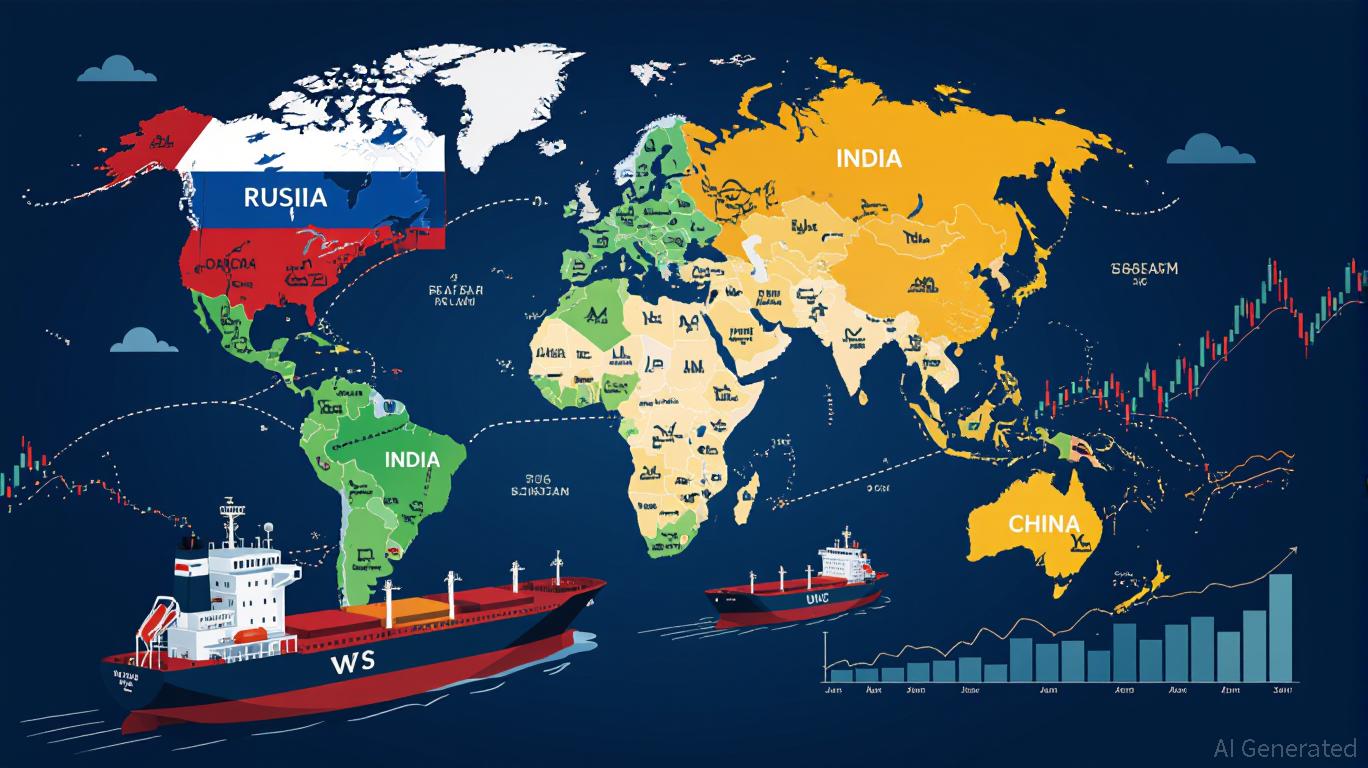
The interplay between U.S.-Russia diplomacy and global markets has never been more consequential. As the Trump-Putin summit in Alaska on August 15, 2025, underscored, the normalization of relations between Washington and Moscow carries profound implications for defense, energy, and emerging markets equities. While the summit did not yield an immediate peace plan for Ukraine, it signaled a strategic pivot toward economic engagement, even as geopolitical tensions persist. For investors, the challenge lies in balancing the risks of volatility with the opportunities emerging from a shifting global order.
Energy Markets: A Pendulum of Volatility
The energy sector remains the most directly impacted by Trump-Putin diplomacy. Russia’s ability to pivot its oil and gas exports to India and China—accounting for 36% and 13.5% of its crude oil sales, respectively—has insulated its economy from Western sanctions. This realignment has created a multipolar energy market, where U.S. influence wanes, and BRICS nations (Brazil, Russia, India, China, South Africa) gain leverage.
The Trump administration’s 50% tariff on Indian oil imports and threats of a 100% levy on Chinese goods aim to isolate Russia, but these measures have had limited success. India’s defiance—purchasing discounted Russian oil—has kept global crude prices in a tight range, hovering between $65 and $75 per barrel. For investors, this duality presents a paradox: energy producers like ExxonMobil (XOM) and Chevron (CVX) could benefit from higher prices if sanctions fail, while LNG infrastructure firms (e.g., Shell (SHEL)) gain from diversification. However, a breakdown in Trump-Putin talks could push oil above $80, exacerbating inflation and trade disruptions.
Defense Sector: A Dual-Edged Sword
The defense industry faces a divergent future. A successful peace deal in Ukraine could reduce global defense spending, negatively impacting firms like Lockheed Martin (LMT) and Raytheon (RTX). Conversely, persistent conflict or renewed hostilities would drive demand for military equipment, favoring companies with diversified portfolios.
Trump’s emphasis on “peace through strength” has already spurred increased U.S. military spending, with a 2025 budget of $850 billion. This trend is mirrored in Europe, where NATO allies are bolstering their arsenals. Investors should prioritize defense contractors with long-term government contracts and robust cash flows, such as Northrop Grumman (NOC) or BAE Systems (BAEUY). However, a de-escalation scenario could lead to short-term volatility, requiring a strategic rebalancing of portfolios.
Emerging Markets: Opportunities in a Fractured World
Emerging markets are both beneficiaries and casualties of Trump-Putin diplomacy. India and Turkey, with their growing trade ties to Russia, stand to gain from normalized energy flows and infrastructure investments. Meanwhile, EMEA (Europe, Middle East, and Africa) markets face heightened risks due to energy price shocks and geopolitical uncertainty.
India’s WIG20 index, for instance, has outperformed EMEA peers by 15% since 2022, driven by its energy diversification and fiscal resilience. Conversely, Eastern European markets like Poland’s WIG20 have struggled with inflation and energy costs. Investors should allocate capital to Asian emerging markets with strong fiscal buffers and low energy import dependency, while hedging against currency risks in EMEA regions.
Strategic Investment RecommendationsEnergy Diversification: Balance exposure to oil producers with investments in LNG infrastructure and renewable energy firms. Defense Sector Hedging: Prioritize companies with long-term government contracts and diversified portfolios to mitigate de-escalation risks. Emerging Market Selectivity: Favor Asian markets (e.g., India, Indonesia) over EMEA peers, using currency hedging and regional diversification. Commodity Safeguards: Allocate to gold (GLD) and uranium (URA) ETFs to hedge against geopolitical and inflationary risks. Conclusion
The Trump-Putin diplomatic landscape is reshaping global markets, creating a volatile yet dynamic environment. While energy markets face a pendulum of price swings, defense and emerging markets equities offer both risks and opportunities. For investors, the key lies in agility—diversifying portfolios, hedging against geopolitical shocks, and capitalizing on the long-term trends emerging from a multipolar world. As the U.S. and Russia navigate their complex relationship, the ability to adapt to shifting geopolitical realities will define investment success in the years ahead.
